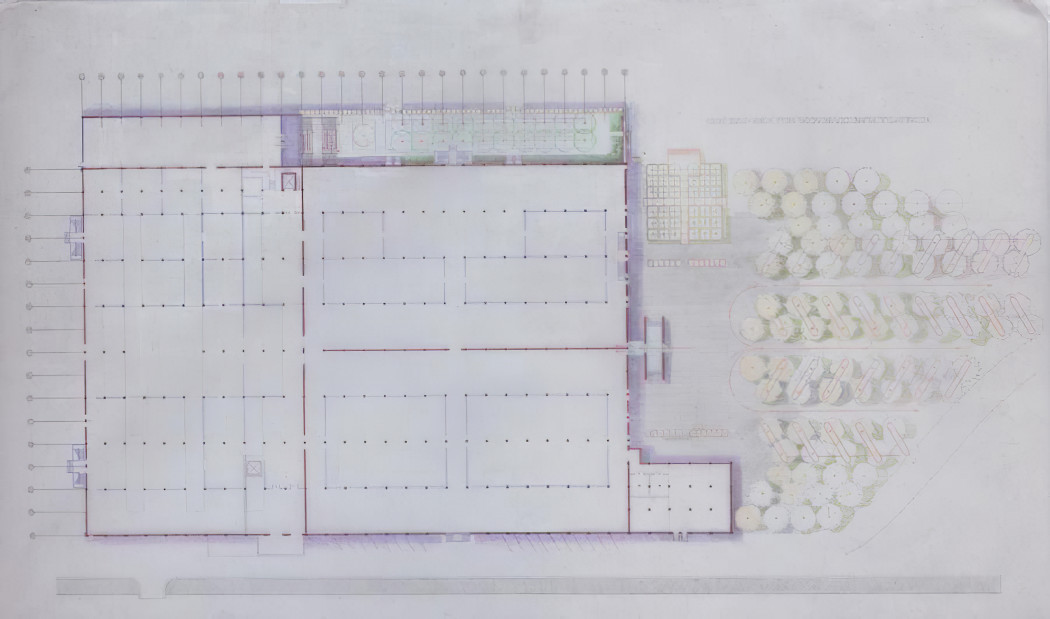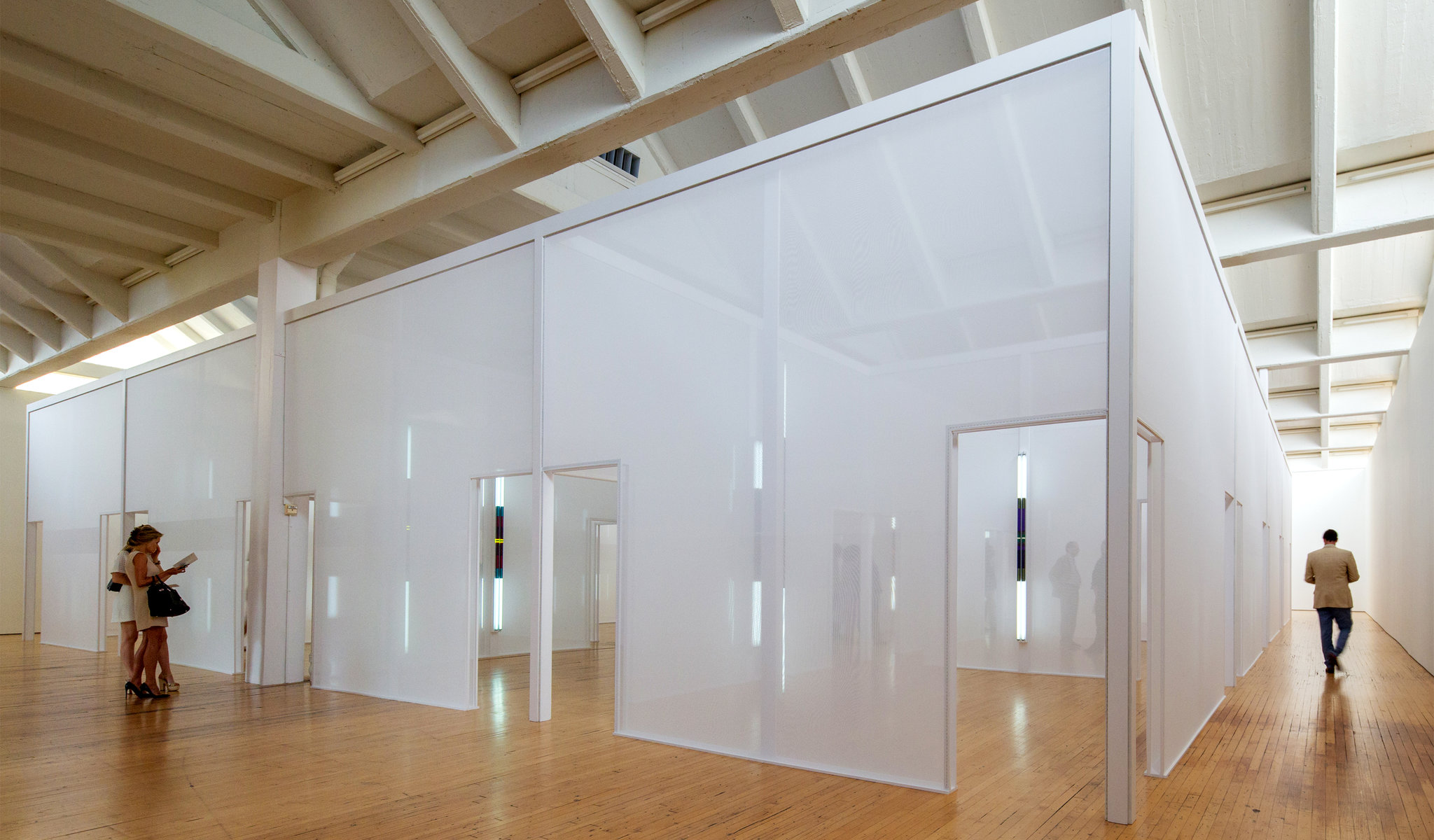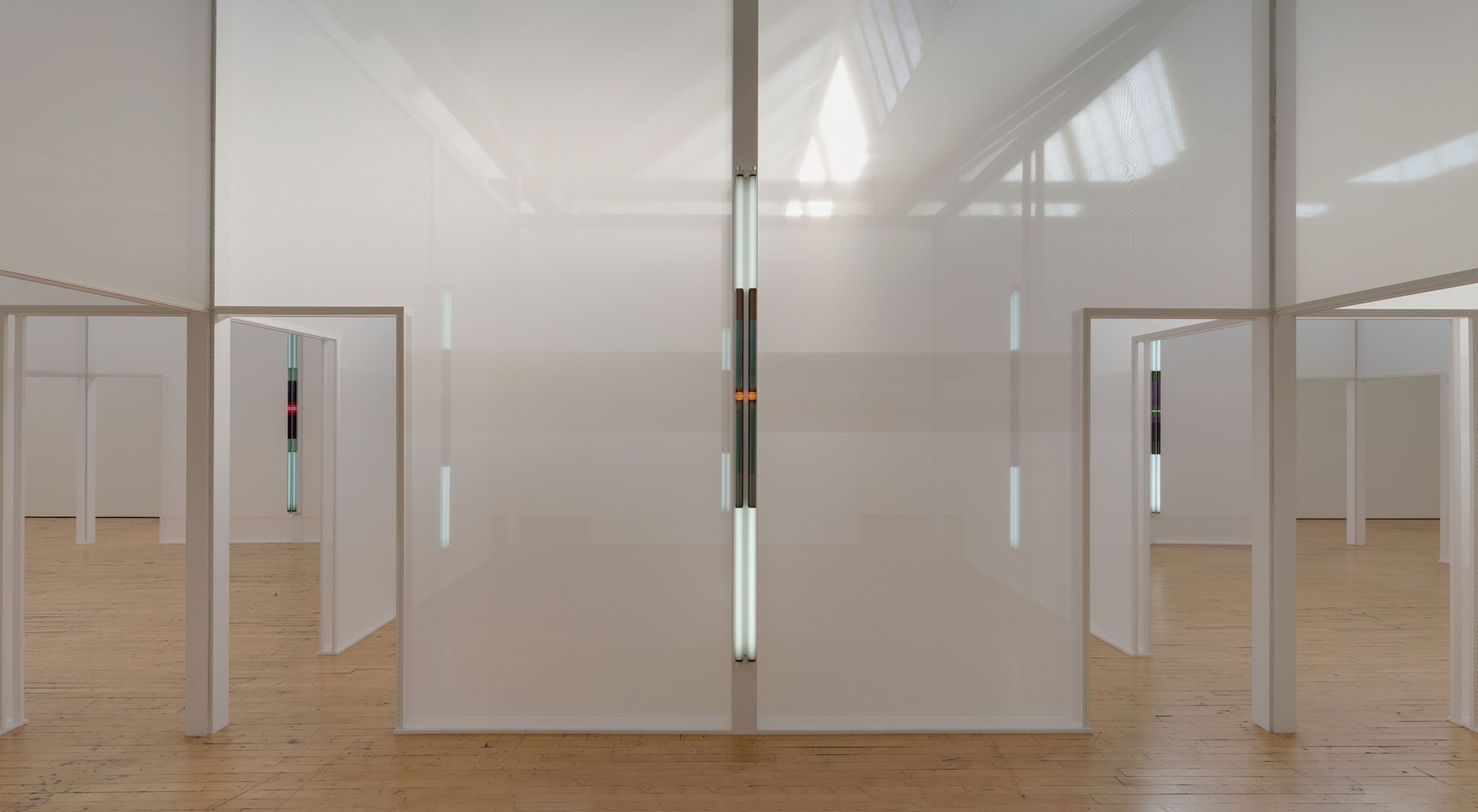PRESENTATION: Robert Irwin-Full Room Skylight, Scrim V, Dia Beacon
 Robert Irwin has explored perception as the fundamental issue of art for over six decades. Irwin, who began his career as a painter in the 1950s and became the pioneer of the L.A.-based “Light and Space” movement in the 1960s, has, through a continual breaking down of the frame, come to regard the role of art as “conditional,” or something that works in and responds to the specific surrounding world of experience.
Robert Irwin has explored perception as the fundamental issue of art for over six decades. Irwin, who began his career as a painter in the 1950s and became the pioneer of the L.A.-based “Light and Space” movement in the 1960s, has, through a continual breaking down of the frame, come to regard the role of art as “conditional,” or something that works in and responds to the specific surrounding world of experience.
By Efi Michalarou
Photo: Dia Art Foundation Archive

For “Full Room Skylight – Scrim V – Dia Beacon” (1972/2022), Robert Irwin has stretched planes of translucent fabric in a “V” shape across two interconnected galleries. Suspended between floor and ceiling, the fabric, or scrim, is illuminated by natural light from above. As the light filters through the taut material, an optical texture is created that simultaneously masks and reveals the surrounding architecture. First realized as a commission in 1972 for Harvard University’s Fogg Museum, Cambridge, Massachusetts, titled “Full Room Skylight – Scrim V – Fogg Museum, Harvard”, in Dia the work is installed in response to the architecture of the building. While Irwin began his career as an abstract painter, by the end of the 1960s the artist had become dissatisfied with the confines of the art object. During this transformative period, Irwin more explicitly explored, as he declared, “our state of consciousness and the shape of our perception”. In 1969–70 Irwin participated in the Art and Technology project at the Los Angeles County Museum of Art, where he collaborated with the experimental psychologist Edward Wortz on perceptual research. As a result of this collaboration, Irwin transformed his studio into a series of environments for NASA’s First National Symposium on Habitability of Environments in May 1970. Irwin’s early experiments influenced many of his peers in California’s Light and Space movement such as Larry Bell, Mary Corse, and Maria Nordman. After discovering scrim, a material traditionally used in theater sets, on a 1970 trip to Amsterdam, Irwin began using it for ephemeral, “site-conditioned” installations, a term the artist uses over that of “site-specific” to signal the responsive nature of each artwork. The fabric can appear as an opaque plane of light or a glowing yet evanescent form, depending on the direction and quality of the light. Irwin executed his first scrim installation, “Fractured Light – Partial Scrim Ceiling – Eye Level Wire” (1970), in a skylit room at the Museum of Modern Art, New York. By stretching the fabric over half the room to create a lowered scrim ceiling, Irwin obscured the light source from one vantage point and revealed it from another. Finding scrim dynamic in its simultaneous ability to conceal and reveal given spatial qualities such as the size of a room and the source of its light, Irwin has repeatedly applied the material to create volumes of light in subsequent installations. An adaptation of one of Irwin’s early scrim installations, “Full Room Skylight – Scrim V – Dia Beacon” exemplifies the period when he began to create artworks that facilitate the experience of perception”. This large-scale work places his work in dialogue with concurrent presentations of works by Larry Bell, Melvin Edwards, and Charles Gaines, all of whom have critically contributed to Minimal, Postminimal, and Conceptual art on the West Coast.
Photo: Robert Irwin, Drawing for Full Room Skylight – Scrim V – Dia Beacon, 1972/2022. Dia Art Foundation. © Robert Irwin/Artists Rights Society (ARS), New York. Photo credit Alessandro Zambianchi, Milano
Info: Curator: Donna De Salvo, Assistant Curator: Zuna Maza, Dia Beacon, 3 Beekman Street, Beacon, New York, NY, USA, Long term installation, opening 6/8/2022- , Days & Hours: Fri-Mon 10:00-17:00, www.diaart.org/


